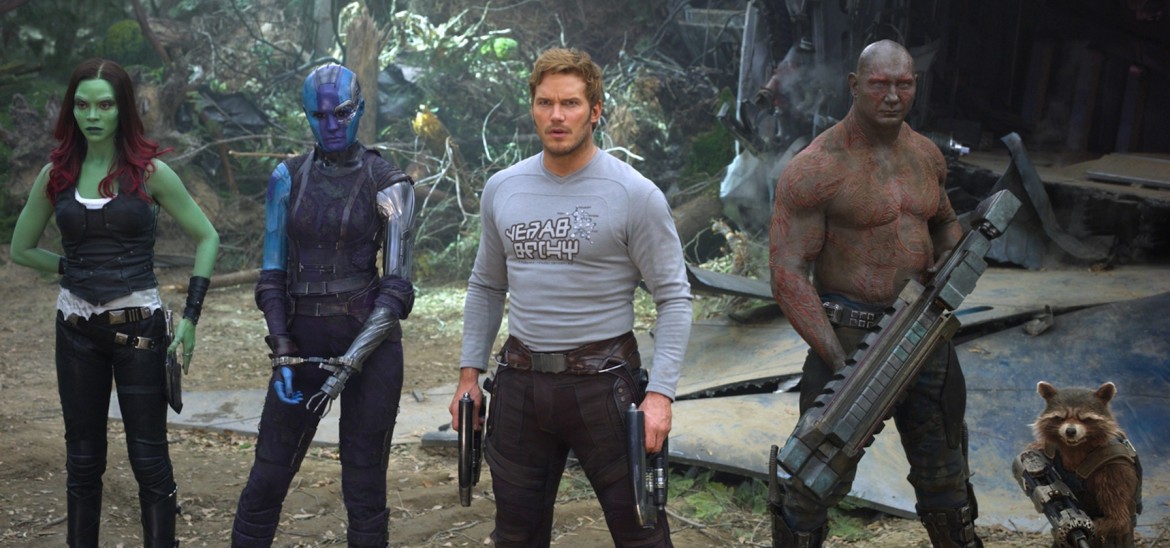Into Film Clubs
Find out everything you need to know about starting an Into Film Club.



Once again using an uplifting mix tape of 'awesome' music to soundtrack the antics of the Guardians of the Galaxy, Vol. 2 sees Marvel's rag-tag team of extra-terrestrial misfits - and one human, naturally - go on a journey of introspection, as they must discover what it means to operate together as a unit. Full of all the banter that made the first film such an enjoyable ride, this follow-up takes the time to establish what makes the characters tick, and why they are each other's best option for survival as they navigate through an often hostile galaxy.
The incredible special effects that create the film's settings reference both our expectations of space - put in place by such classics as Forbidden Planet and Star Wars - but also open it up to new realms of imagination. As the action for this sequel takes place over fewer locations than the previous instalment, more time was spent on giving each planet its own unique feel. Over a thousand people worked on the physical and digital sets, creating both the gilded world of the Sovereigns and the rough-and-ready Ravager planet. Incredibly, the intriguing Max Ernst-esque landscapes of the planet Ego required half a trillion polygons to produce, making it the biggest visual effect ever created!
The imagery is inspired variously by cult science fiction films, such as Flash Gordon, the works of artist Wally Wood, and illustrations from pulp novels. For Ego itself, the mathematically-inspired creations (known as 'fractal art') of artist Hal Tenny were so influential that Tenny himself was hired to work on the design. In spite of the stunning digital effects, as many practical sets as possible were also created to help ground the actors' performances, which otherwise would have taken place entirely against green-screen. One of the most impressive physical sets is the Ravagers' ship the Eclector, which could be taken apart and reassembled in different ways, depending on what look or configuration would best fit the action.
While there are still plenty of moments that demand the Guardians' unique combination of skills, gadgetry, and quick-thinking to turn situations to their advantage, this sequel is more about establishing why their dynamic works on a personal level. Despite their constant bickering and quickness to put one another down, beneath the banter is a connection forged in each character's experience of being an outcast. Their talents and personalities, when combined, make them a formidable opponent, but also make them a great team and a surrogate family - a unit much like the intergalactic ensemble of Star Trek.
As our young reporter Maya found out in her interview with director James Gunn (see below), the production of Guardians of the Galaxy Vol. 2 benefitted from audience reaction to the first film, allowing him to expand on what people responded to previously. With such a positive reception to the reborn, dancing potted version of the tree-creature Groot as the first film closed, Baby Groot makes a welcome comeback here, with grouchy raccoon Rocket acting as his caregiver, in a reversal of the power dynamic between the two. Groot is one of many characters that are given a second chance, as Gamora once again finds herself confronted by her resentful sister Nebula, and is forced to own up to her responsibility for the dangerous dynamic that exists between them. Many other characters in the film must similarly make peace with their past decisions and face their present consequences.
At the centre of the action, Star-Lord/Peter Quill is delighted to discover that one of the greatest unanswered questions of his life - the identity of his father - will finally be revealed, in such a way that not only fits in with his childhood fantasies, but also elevates how he considers himself and his position in the present. On the flipside to this, Quill's former protector, employer and father-figure, Yondu, is forced to address the morally dubious part he played in Peter's traumatic childhood, and the responsibilities their shared history has given him.
As the unconventional family unit that is the Guardians struggles with new knowledge - reconsidering their relationships to people from their past and working out who they can trust in the present - they are helped along by Ego's sidekick Mantis, a lonely empath who connects to and influences the feelings of those she touches. Mantis draws the audience in closer as she brings out the softer side of characters who have previously come across as tough and guarded, like Drax, while others in the crew refuse to grant her access to their vulnerabilities.
While the characters work through their complex family dynamics, the film itself provides a platform for an intergenerational connection between audience members. Building on Peter's 1980s references from the first film, the second delves more into the context of that trait, and gives the parents in the audience something to connect with. Younger viewers, meanwhile, might find themselves more in the position of Peter's extra-terrestrial friends, and reliant on his own explanations. While the past may be a sensitive matter for the film's protagonists, for the audience, the nostalgic references help us to feel at home in the future, with the iconic soundtrack elevating the sense of fun as it's used to counterpoint the action sequences as well as underscore the more emotional moments.
The Guardians' unique family unit and unconventional fighting prowess is to be called upon again in future films, as they unite with other members of the Marvel universe for the forthcoming Avengers: Infinity War, before - of course - returning for Guardians of the Galaxy Vol. 3.
Viewing 4 of 4 related items.

Find out more about our streaming service, designed specifically for UK schools.